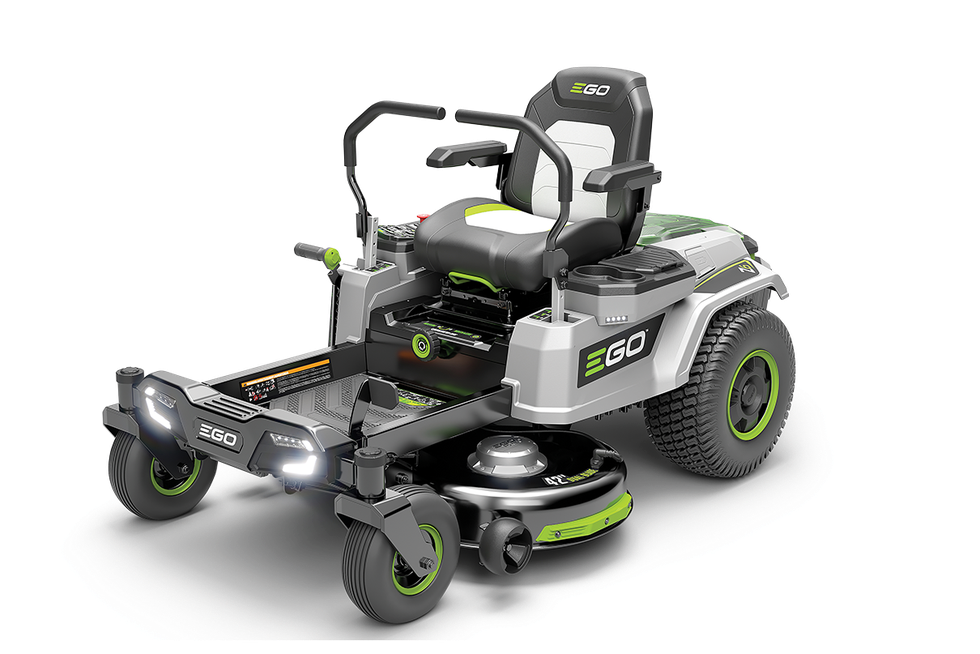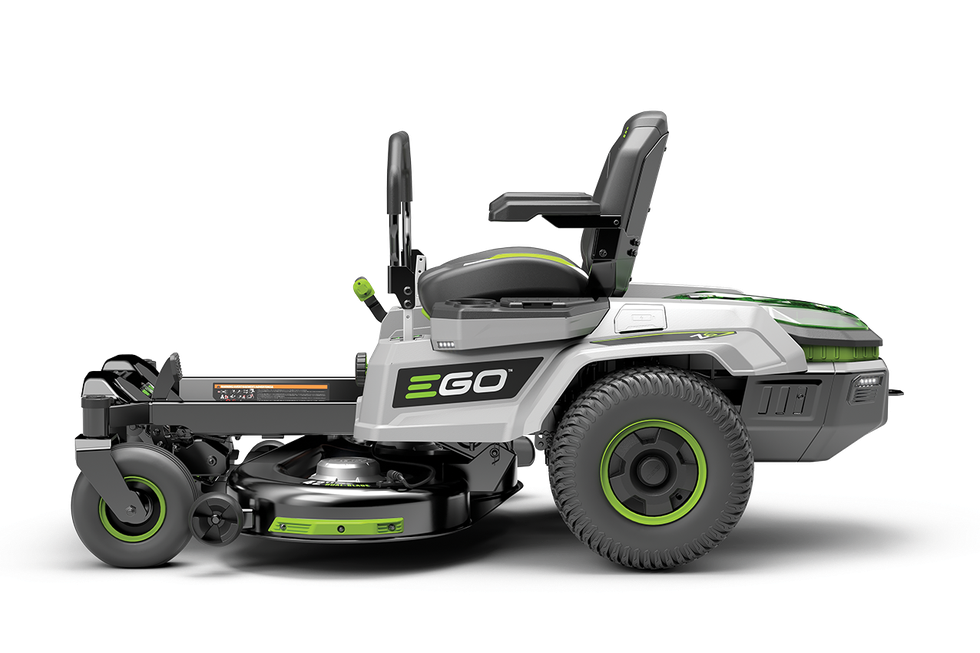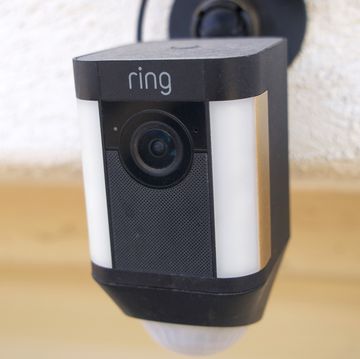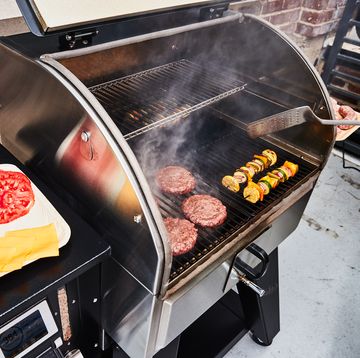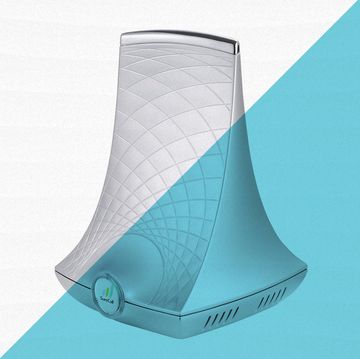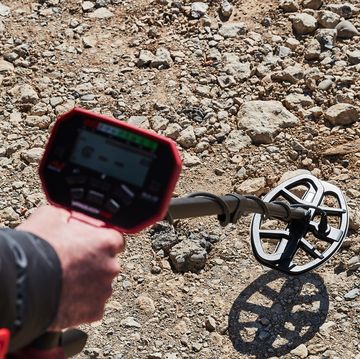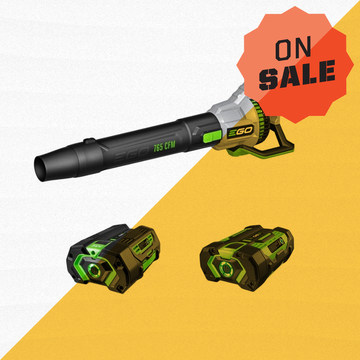We’ve been reporting on electric zero-turn mowers for some time, so it takes a lot to get our attention. But Ego succeeded when it announced the Z6 (model ZT4204), the first electric zero-turn mower powered by removable lithium-ion batteries. That adds a level of convenience not seen in this class of mower before, since you can plug it in to charge or swap the dead batteries for some that are freshly charged. With the former, you’re back to cutting grass in two hours, still a remarkable feat. But in the second case, you can get back to cutting grass in minutes.
Equally remarkable, in our view, is that the company claims that the 410-pound machine with a 42-inch deck is equivalent to a 22-horsepower gas-engine mower. That’s a difficult claim to verify, since there are a lot of variables to be considered, but it doesn’t strike us as implausible. The Z6 is scheduled to go on sale at Lowe’s in late January and will cost $4,999. We haven’t tested the mower yet, but are working on getting our hands on one and will update this review with our thoughts once we do. In the meantime, here are our first impressions on the Z6’s potential as it hits the market.
Some Zero-Turn History
Zero-turn mowers (or Z’s for short) go all the way back to 1964 when the Hustler debuted. That first mower descended from farm equipment with a lever-operated steering system that enabled it to pivot at the end of the row, rather than making a wide turn. Still, for most people who were used to a steering wheel, the concept of pivot steering seemed strange. And to some it still does. People who had operated earth-moving equipment, military tanks, and oddball industrial machines would find it familiar. Most people who had larger lawns preferred tractors with steering wheels or something like the famous handlebar-equipped Snapper mower that Tom Hanks drove in his portrayal of Forrest Gump.
It took years for most people to take to zero-turn, but to landscapers the speed and maneuverability was immediately obvious. These mowers began to hit their stride in the equipment market in the ’70s and became mainstream mowing equipment in the ’80s.
We ran our first test of gas-engine residential zero-turn mowers 20 years ago, and we’ve presented awards to two electric zero-turn mowers since then: the Hustler Zeon in 2009 and the Cub Cadet RZTS in 2013. Both were great machines and incredibly innovative, and both were powered by lead acid batteries. Both machines needed to be plugged in to replenish their charge.
What’s New With the Z6
As for powering the Z6, it comes with a wall-hung charger that provides a two-hour charge cycle. Drive the mower next to the charger, and plug in the charging cable. If you opt to plug in fresh 56-volt batteries to keep mowing immediately, you can use any one of the various Ego 56-volt chargers to replenish the dead ones.
The mower comes with four 10-amp hour lithium-ion batteries; that leaves two empty bays in the six-bay compartment into which you can place two other 10-Ah batteries (that you buy separately), or you can use Ego’s 5- or 7.5-Ah models, if you already happen to own them. The four 10-Ah batteries provide enough charge to mow two acres, the company says, or 87,120 square feet of grass. To help you picture that area, it’s about equal to a football field and a half, including the end zones. Load two more 10-Ah batteries in those other two bays and you expand its cut capability, EGO says, perhaps adding as much as another acre before the batteries need to be recharged.
Of course, there are many variables in estimating cut area on one charge. This Ego mows at three to seven miles per hour and has a transport mode (non-cutting) speed of 8 mph. Tall grass, cutting around obstacles, and cutting uphill all reduce the mowed surface area per charge.
Other Features
There other features that make this one of the most advanced mowers out there. The battery bank feeds current to two deck motors—one for each 21-inch blade—and two drive motors. An LCD interface enables you to control blade speed (2,400 to 3,200 rpm), ground speed, lap bar sensitivity, and what the company calls drive modes: the Control setting for protecting turf and preventing wheel marks, the Standard setting for everyday mowing, and the Sport setting for precise turns around sharp corners. The theory with all that control is that you can increase battery run time, you mowing efficiency and the quality of the cut. We haven’t tested this mower yet, but we would suspect that after some experimentation, you’d have the various controls dialed in to your liking.
You also get three seat positions and hydraulic seat supports, and you can adjust the level of support using a knob below the seat position adjustment lever. The deck is adjustable through ten cutting positions for finished grass height from 1.5 inches to 4.5 inches.
We’re all for advanced features, but at its most basic level, this is a grass-cutting machine, and you need to adjust its performance in more basic ways. We were glad to see that there are accessories to help you do that: a mulch plug ($29.99), bagger attachment ($399.99), and a pair of high-lift blades ($42.99) for improved air movement to aid in bagging. All these help you get exactly the kind of cutting performance you need. Should you purchase two more batteries to fill out the battery bay, the 10-Ah power packs are $449.99 apiece.
If you figure the cost of some of these accessories into the price of an already-expensive mower, it’s a lot of money. On the other hand, to have a landscaper handle a two-acre cut, you’re looking at somewhere in the neighborhood of at least $90 to $120 per week during the mowing season and quite likely more. With a five-month mowing season, the Z6 will have paid for itself somewhere in the range of two years. But for most people, it’s less about economics and more about mowing your yard exactly as you want it, with as little drama as possible. For some homeowners, a quiet, clean-running mower like this is the solution.

Roy Berendsohn has worked for more than 25 years at Popular Mechanics, where he has written on carpentry, masonry, painting, plumbing, electrical, woodworking, blacksmithing, welding, lawn care, chainsaw use, and outdoor power equipment. When he’s not working on his own house, he volunteers with Sovereign Grace Church doing home repair for families in rural, suburban and urban locations throughout central and southern New Jersey.

